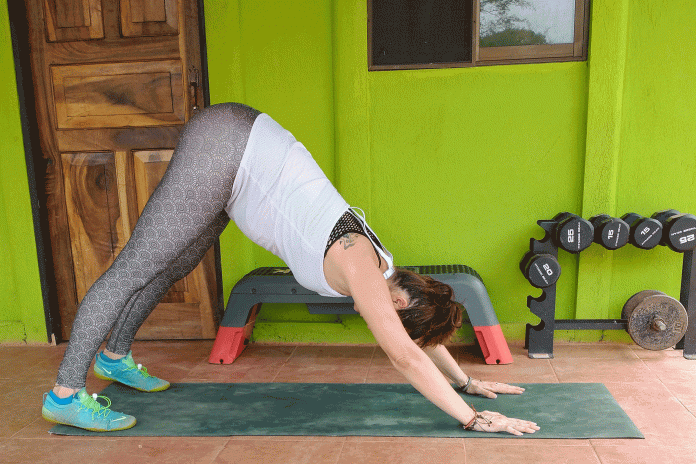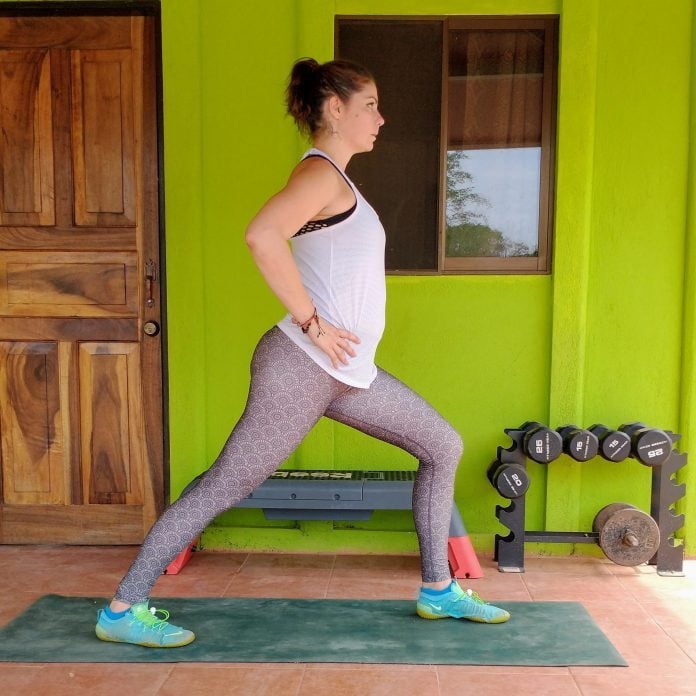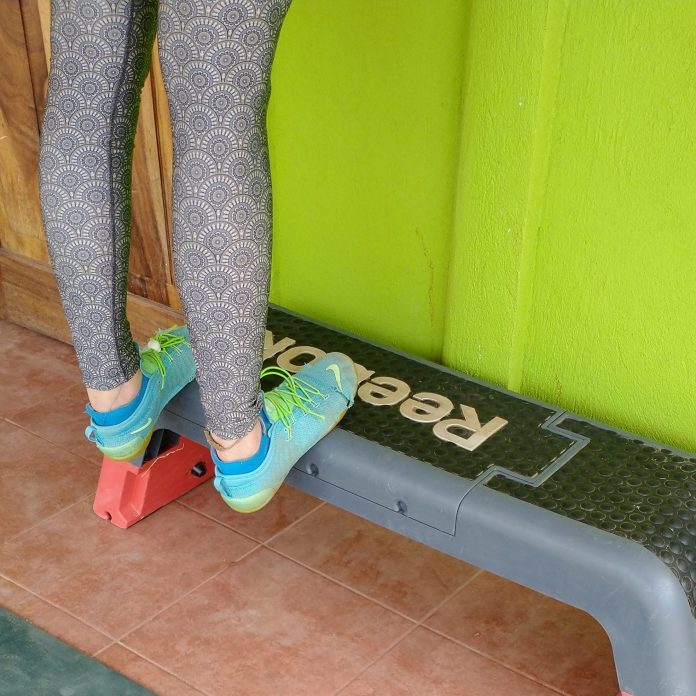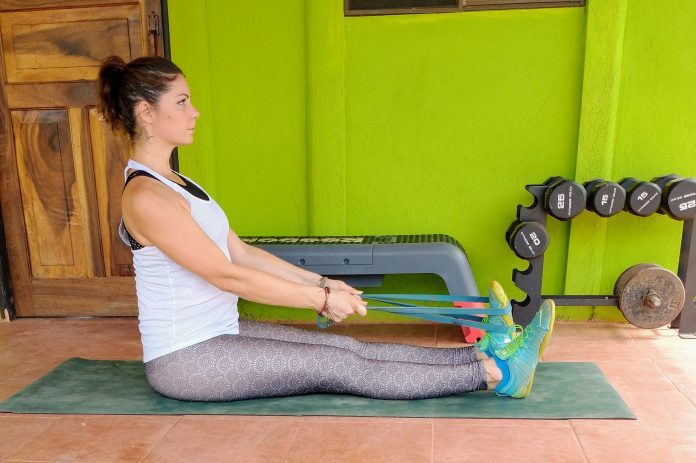Your calf muscles are pretty darn important when it comes to moving around. Think of them as the springs and shocks of your lower body. They help propel you forward as you walk, giving you the ability to run, jump, and change direction. At the same time, they cushion each step, protecting your knees, hips, and even your back by reducing the pounding force of your weight on your joints.
So it should come as no surprise that tight calves are incredibly common. But that doesn’t mean you have to live with tightness or pain. Read on to learn how to deal with (and stretch out) your calves.
(Related: The Types of Stretching Fitness Experts Recommendand One They Avoid)
Your calf muscles, explained
Before you can understand why your calves are so tightor how to fix themyou need to know a little about the muscles. The two muscles that make up the calves (the gastrocnemius and the soleus) come together at the heel and form the Achilles tendon, crossing the ankle joint. The gastrocnemius also crosses the knee joint.
Any tightness, limited range of motion, or imbalance between the muscles can pull and push on the vital joints of the ankle and the knee. And because every step you take requires engagement of the calves, a little tightness can develop into bigger problems if it’s not caught and addressed.
Common problems with calf tightness
“I like to think of the calves as the first line of defense against upstream postural issues at the hips and spine,” says David Rosales, the co-owner of Roman Fitness Systems and a personal trainer certified by the National Strength and Conditioning Association.Tightness in your calves changes your body’s mechanics slightly, shifting your weight slightly forward, as though your heels were always slightly elevated. “This forward shift places more strain on your quads and hip flexor muscles, which then pull on the spine and cause an excessive lower back arch,” he says. “It’s a cascading effect on your major joints from your knees up through the torso.”
Sara Mikulsky, a physical therapist and owner of Wellness Physical Therapy in New York City, agrees. She points out that limited range of motion in the muscles of the calves also can lead to problems in the foot, including tendonitis, plantar fasciitis, and stress fractures. You could also end up with knee problems like patellofemoral pain syndrome, or hip issues like bursitis.”When the calf muscles become tight, the heel bone can be pulled inward,” Mikulsky says. “This alignment places the foot bones and joints in improper positions, eventually leading to injury.”The point is, even if you’re not aware of it, tightness in your calves could be behind pain in your lower body, hips, or spine.
(Related: 4 Quad Stretches Everyone Should Know)
Calf stretches to ease tightness
A little stretching can go a long way toward helping ease calf tightness while reducing your risk of injury. Let’s say your tight calves are pulling your body slightly forward. To correct the problem, you’d need to focus on the opposite motion: pulling your feet upward, toward your shins. This move (the technical term is dorsiflexion) lengthens the back of your calves.”You want to train, or stretch, the pattern of dorsiflexion,” Rosales says. “Most people have suboptimal dorsiflexion, especially those who frequently wear heels or other elevated shoes. The solution is simple: do stretches that place your ankle in dorsiflexion, and work on slowly improving that range of motion.”Incorporate a few of the following stretches into your regular workout routine to help improve the dorsiflexion of your foot while lengthening your calves.
Walk the dog
Downward dog is an excellent yoga stretch that encourages you to press your heels toward the floor. The move lengthens the back of your calves, hamstrings, and even your glutes. Walking the dog starts with a Downward Dog position, then involves “pedaling” each leg, deepening the stretch in your calves.

How to do it
Start in a high plank position: palms under your shoulders, body extended, weight supported on the balls of your feet and your palms. Exhale and press your hips up toward the ceiling as you press back through your palms, extending your shoulders. Your body should form an upside-down “V.”
Take a deep breath and focus on pressing your heels further toward the ground (they don’t have to touch). You’ll feel a stretch through your calves. From here, bend your right knee, shifting your weight slightly to the left side. Press your left heel deeper in the stretch. Hold for three to five breaths, then switch sides. Continue this “pedaling” motion in a slow and steady manner, breathing deeply and relaxing into the stretch for a total of 60 seconds.
Release, relax, then repeat one more time.
(Related: Got Buttock Pain? Try These 3 Piriformis Stretches for Relief)
Lunging calf stretch
The lunging calf stretch focuses entirely on your calf muscles. The goal here is to keep your back foot in complete contact with the ground (your heel doesn’t lift) as you perform this leg stretch.

How to do it
Stand tall, with your feet hip-distance apart and your knees slightly bent. Take a large step forward with your left foot. Both feet should be in complete contact with the ground.
From here, bend your left knee to enter a lunge, extending your right leg fully. Keep your right heel in contact with the ground. You should feel a good stretch through your heel and up your calves. Hold the position for 20 seconds, relaxing into it to deepen the stretch without pushing to a point of pain.
Release and relax, then repeat two more times before switching sides.
(Related: 5 Stretches for Upper Back Pain)
Heel drop on a step
The heel drop on a step (or any elevated surface) places your foot into more extreme dorsiflexion, really stretching out the back of your calves. Just be careful to stop at the end of your comfortable range of motionyou’ll feel a slight stretch. Don’t allow gravity or your body’s weight to push you to a point of pain or discomfort.

How to do it
Stand on a step with your feet hip-distance apart. Position the balls of your feet toward the edge of the step so your heels aren’t in contact with the surface. Place your hands lightly on a wall or sturdy piece of furniture to help with balance and control.
From here, allow your heels to lower toward the floor. Stop when you feel a stretch, then hold the position for 20 seconds, relaxing into the stretch. Step forward so your whole foot is on the step and rest for a moment.
Repeat the stretch two more times.
(Related: 4 Expert Tips You Need to Know to Stretch Properly)
Seated stretch with towel
The seated calf stretch uses a towel, strong resistance band, or yoga strap to target each calf independently.

How to do it
Sit tall on a mat, your legs extended straight in front of you. Wrap a rolled-up towel, a strong resistance band, or a yoga strap (or even a belt) around the ball of your right foot, holding the ends of the item in both hands. Take a deep breath. As you exhale, pull the strap toward you. This will pull the ball of your foot and your toes closer to you. Stop when you feel a stretch.
Hold the position and breathe deeply, relaxing into the stretch for 20 seconds. Release, relax, and rest for a second. Repeat two more times on the right side before switching legs.
Now that you know these calf stretches, here are 3 stretches that are good for your heart.
The post 4 Calf Stretches Everyone Needs appeared first on Best Health Magazine Canada.


0 Commentaires